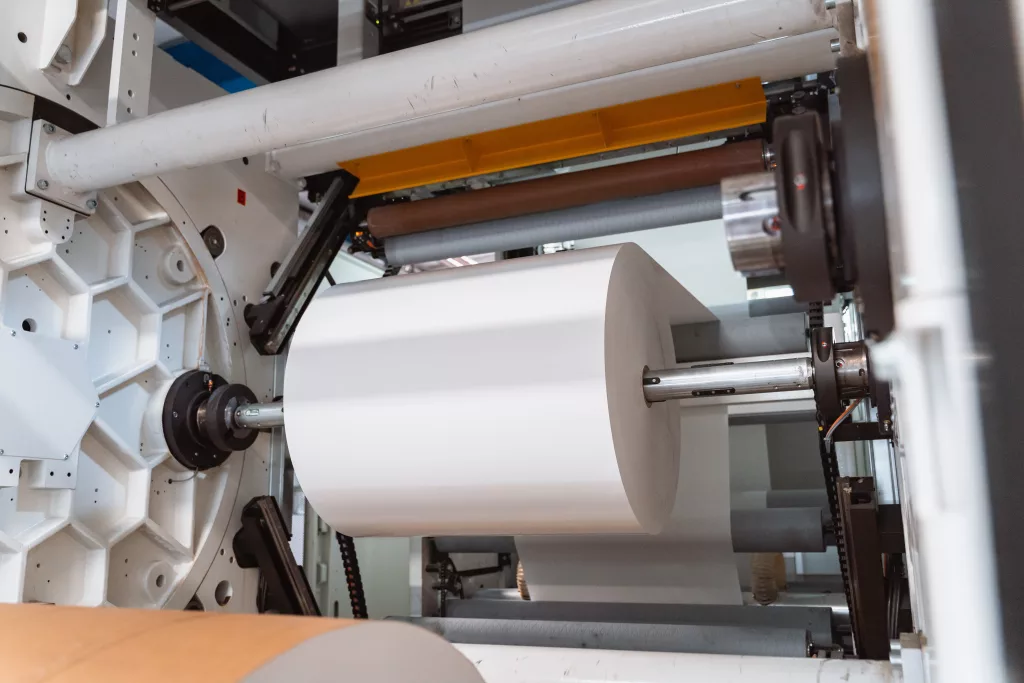
With Semoulin Packaging’s articles, the readers of the blog discover a different aspect of the industrial packaging sector each week. This week, we wanted to show you a too-often overlooked part of packaging: its technical feats.
Indeed, technical research and innovation are crucial components. They guarantee both the quality and reliability of the packaging. For a company like Semoulin Packaging, specializing in paper packaging, mastering the techniques of evaluating and measuring material resistance is essential.
A closer look at a century of expertise that remains at the cutting edge!
Paper? An incredible material for your packaging
On this occasion, the Semoulin Packaging teams have once again opened the doors of the site based in Thulin. Anne-Claude starts the visit. Wearing multiple hats, she is well-acquainted with the technical challenges offered by paper.
As the quality, products, and purchasing manager within the Belgian company, Anne-Claude has been working in the specific field of paper packaging for almost three years. She summarizes the daily challenges:
“The reality of our work is that paper is a simple material… to which we demand a lot!“
Indeed, in the collective imagination, we think of paper as a simple sheet. “Yet, this is terribly reductive.“
“The paper we work with at Semoulin is chosen for its quality—of course—but we never rest on our laurels. Innovation is part of the company’s DNA, and we strive to maintain a tradition of excellence in our productions.”
Few people know, but working with paper requires deploying a thorough laboratory analysis. That’s exactly where Anne-Claude takes us, to meet Yvan, Semoulin Packaging’s quality supervisor.
Laboratory tests to determine the best products
“Here, we test new papers to use or the resistance of products already defined in the Semoulin portfolio. Sometimes we also need to adapt existing packaging, based on a change requested by a client, for example. The important thing is that, in the end, we provide clients with the best packaging, tailored to their products!”
Yvan, therefore, conducts daily quality controls with his colleagues. He also participates in the development of new products.
“It’s logical: we don’t ask the same thing from paper that is supposed to package a 10-kilo bag of coal as from a 500-gram bag of flour. Whatever the case, we must be able to offer a packaging component that meets our clients’ specifications. And that’s why we analyze the raw material so thoroughly: the paper!”
Paper under high surveillance: technique and innovation at the heart of Semoulin Packaging
So, how do we concretely control the quality of paper in the laboratory?
“Thanks to all the devices you see in this room” Yvan naturally replies. Indeed, the entire quality control installation is full of machines. And it’s true that we rarely encounter these in our daily lives…
Although all the company’s secrets cannot, of course, be revealed here, Yvan and Anne-Claude were willing to give an idea of the tests carried out internally. Enough to give collaborators a view of all that is done to ensure consistent quality!
How to test the quality and resistance of paper?
- Tensile Strength Test
- Burst Strength Test
- Tear Resistance Test
- Tensile Strength Test: This is what we call the dynamometer. It is an “essential instrument for measuring the tensile strength” of paper. It determines the maximum force the paper can withstand before breaking.
“This is essential for paper packaging because this measure tells us if the materials used are strong enough. We record the maximum force that must be applied before the breaking point, and this is valuable information. It allows us to recommend the best paper based on handling and transport constraints of the final packaging.“ - Burst Strength Test: This step involves pressurizing a sheet of paper with increasing pressures until it bursts. This specific measure is crucial for paper packaging since the products must withstand sometimes harsh transport conditions.
“A test like this allows us to know the exact pressure a material can withstand before breaking. And it provides us with important information about its solidity!“ - Tear Resistance Test: This third test measures the force needed to propagate a tear from an initial tear. “The results we obtain help us evaluate the durability of the paper under real use conditions.” This is particularly important for paper packaging that must withstand rough handling or everyday accidents.
Conclusion
At Semoulin Packaging, the teams are committed to providing the highest quality paper packaging and testing its resistance with rigorous tests.
By using advanced testing instruments like those mentioned as examples, the company can guarantee quality products. The goal is to meet the strict requirements of the various sectors with which Semoulin Packaging collaborates.
And Yvan gives the final word: “To summarize, our packaging techniques are designed to offer durability, resistance, and reliability, ensuring optimal protection for all products to be packaged!”
Trust Semoulin Packaging and contact the sales team to benefit from our expertise.

